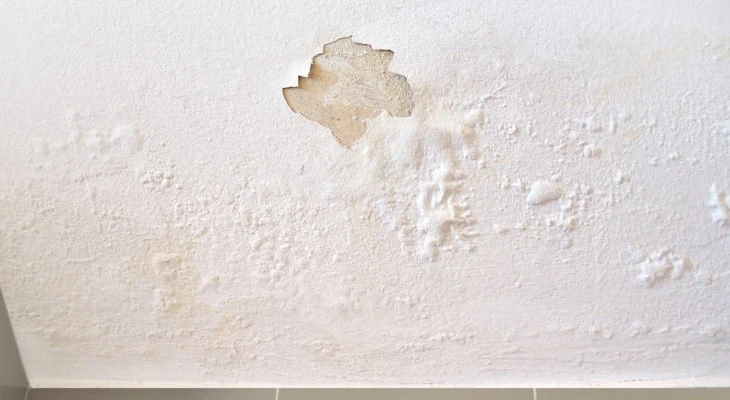An unfortunate reality of painting a wall is that it can go wrong pretty easily. Even if you’ve done everything correctly, sometimes a water bubble in your wall will appear, causing panic and frustration over what you can do to correct it.
Water bubbles between the wall face and the paint should be popped with great care. Afterwards, it is important to determine the source of the water to prevent any future leaks. In some instances, a professional is required.
It’s important to note that this issue is three-fold. You will need to identify and repair the source of the water leak, repair your damaged wall, and inspect surrounding areas for other signs of damage.
Table of Contents
Why Is My Paint Bubbling?
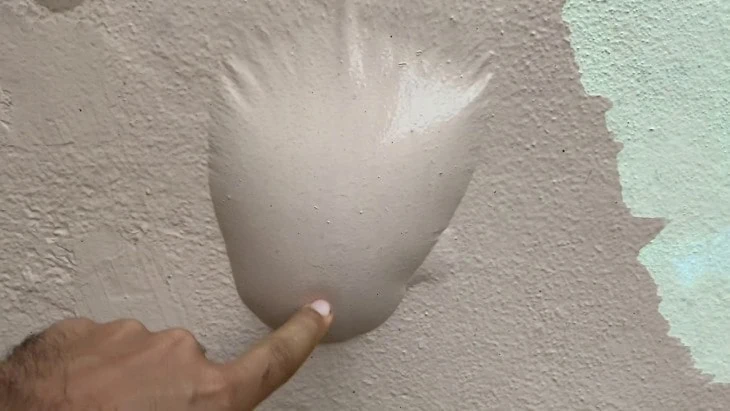
If you’ve noticed a sudden bubble underneath paint on a wall that was previously fine, the cause will usually be a leak of some kind, either on the inside or the outside of your house.
Roof Leaks
Roof leaks are one of the most common causes of any general water damage inside your house. Sometimes you can get lucky and notice the leak dripping into the center of the room.
But if it’s very small and the leak is over your trusses, you may not notice it until you see visual signs of water damage on your walls.
If your roof is older than 10 years old, it’s recommended you get it replaced. A professional can come out to your house and determine if there’s any leaking on your roof. It’s not recommended you inspect or repair this damage yourself.
Cracks on the Exterior Wall
This is another area that may require the expertise of a professional. It doesn’t matter if your exterior wall is brick, stucco, concrete, or wood panels, any material can get a crack.
Though a small hairline crack on the exterior may not seem like a big deal, all it takes is one night of driving rain to force the rainwater into that crevasse and down into your walls.
Plumbing Leaks
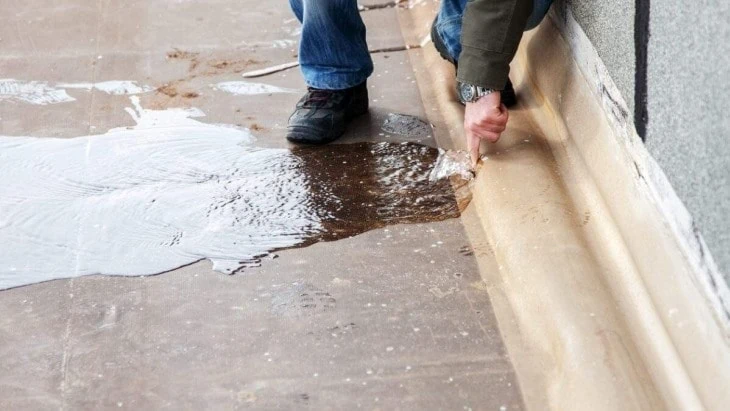
Whether it’s small drips or a large pipe that has burst, this is another very common cause of paint bubbling on walls because of water damage.
You should check all toilets, faucets, showers, etc. Run your hands on the outside of the pipes so you can see and feel for water. Even small drips can form large puddles if they are neglected long enough.
If you have a multi-story home and the water bubble is on an interior wall, try to determine if there is a bathroom or laundry room above that area. If there is, it’s likely there’s a plumbing leak within your walls.
Hire a professional to determine if there are any leaks in your plumbing pipes within your walls.
Window Leaks
It should be fairly easy to determine if your water bubble is coming from a window leak. If it’s below a window, it’s most likely that your window needs to be repaired or replaced. It might be as simple as resealing it.
High Humidity
This would be the best-case scenario for water bubbles under your paint. If you notice multiple tiny bubbles instead of one large collection of water, it’s most likely due to a high humidity environment.
You should still check for any potential water leaks just to be sure, but high humidity is the root cause, fixing it is as easy as stripping your paint and repainting and then investing in a dehumidifier.
You may also want to look into changing the type of paint applied on your walls. If there’s bubbling in your bathroom paint, you should opt for a paint that is designed for high moisture environments, such as latex.
Should I Pop a Water Bubble on My Wall?
The short answer is yes, you can and should pop the water bubble you notice on your wall. But before you do, there are a few important things you need to keep in mind.
What Kind of Water Are You Dealing With?
There are two types of water you may encounter when dealing with water leaks: clean water and wastewater.
Clean water and rainwater are safe to pop and handle on your own. These will come from roof and window leaks, sink drains, and most appliances.
Wastewater will come from toilets and septic pipes within your house and should not be handled by you or your family. It contains a plethora of harmful bacteria and you don’t want to come in contact with it or risk spreading it onto the floor.
Instead, you should hire a professional to take care of the issue.
Always Have a Plan
Don’t go slicing into that giant water bubble, no matter how satisfying it may be. You want to prepare ahead of time to catch any water that comes out.
How to Fix a Water Bubble in Your Wall
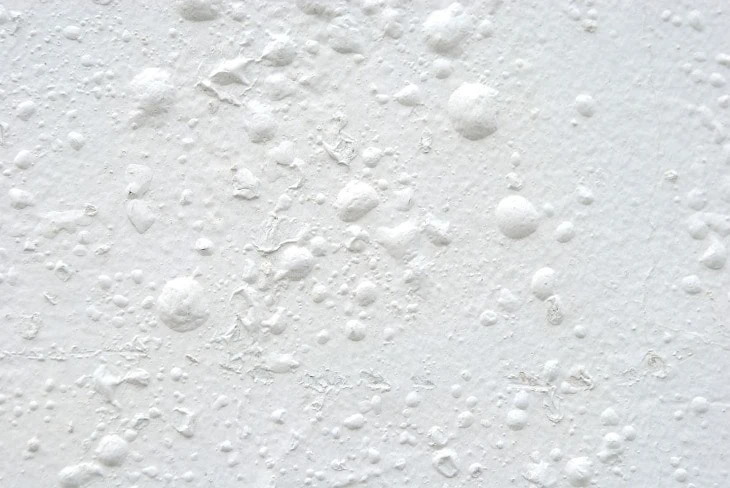
If you’ve determined the source of the leak is clean water, you can pop the water bubble safely. It’s recommended you do this even if the leak source hasn’t been repaired yet (because that can take weeks in some cases).
Pop the Bubble
Lay down towels or grab a bucket to catch any water that will come out. Using a small knife, slice the bubble at its lowest point. This prevents it from “cupping” water. Run your hand downward across the area to ensure every drop comes out.
Peel Back Paint and Assess the Damage
Once all the water is out, remove the rest of the water damaged paint from the surrounding area. You may need a paint scraper to do this.
If you are repairing a water bubble in drywall, check the drywall to make sure it’s not compromised (it will feel soft and squishy). If it’s damaged, you will need to remove this portion of drywall.
Also, check the surrounding areas for signs of mold growth.
Let It Dry Completely
Pat the area dry with towels to the best of your ability and then allow it to air out and dry completely before moving on to repairs. This can take up to two days. You can direct floor fans at the area to speed up the process.
Repair the Area as Normal
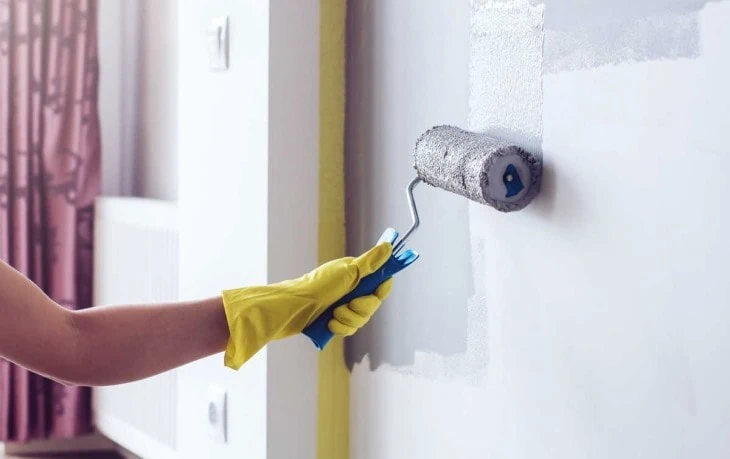
If you have to remove drywall, you will replace the missing section and repaint it as normal.
If you didn’t remove any drywall, it’s still recommended you put a thin layer of spackle over the area to ensure a completely dry canvas. Sometimes, small amounts of water may remain in the previous drywall but it could still feel dry to the touch.
Smooth the spackle out and then sand the area after it’s dry. Afterwards, paint and prime as you normally would.
Final Thoughts
Nobody ever wants to see signs of water damage in their homes. It usually means the repairs are lengthy and costly. Noticing a water bubble on your wall means you have your work cut out for you, but it’s still possible to repair the wall itself easily.
While some of the damage can be mitigated by you, it’s important to recognize areas that need professional guidance and repair. Roof damage, wastewater, and internal plumbing problems usually require experts.

